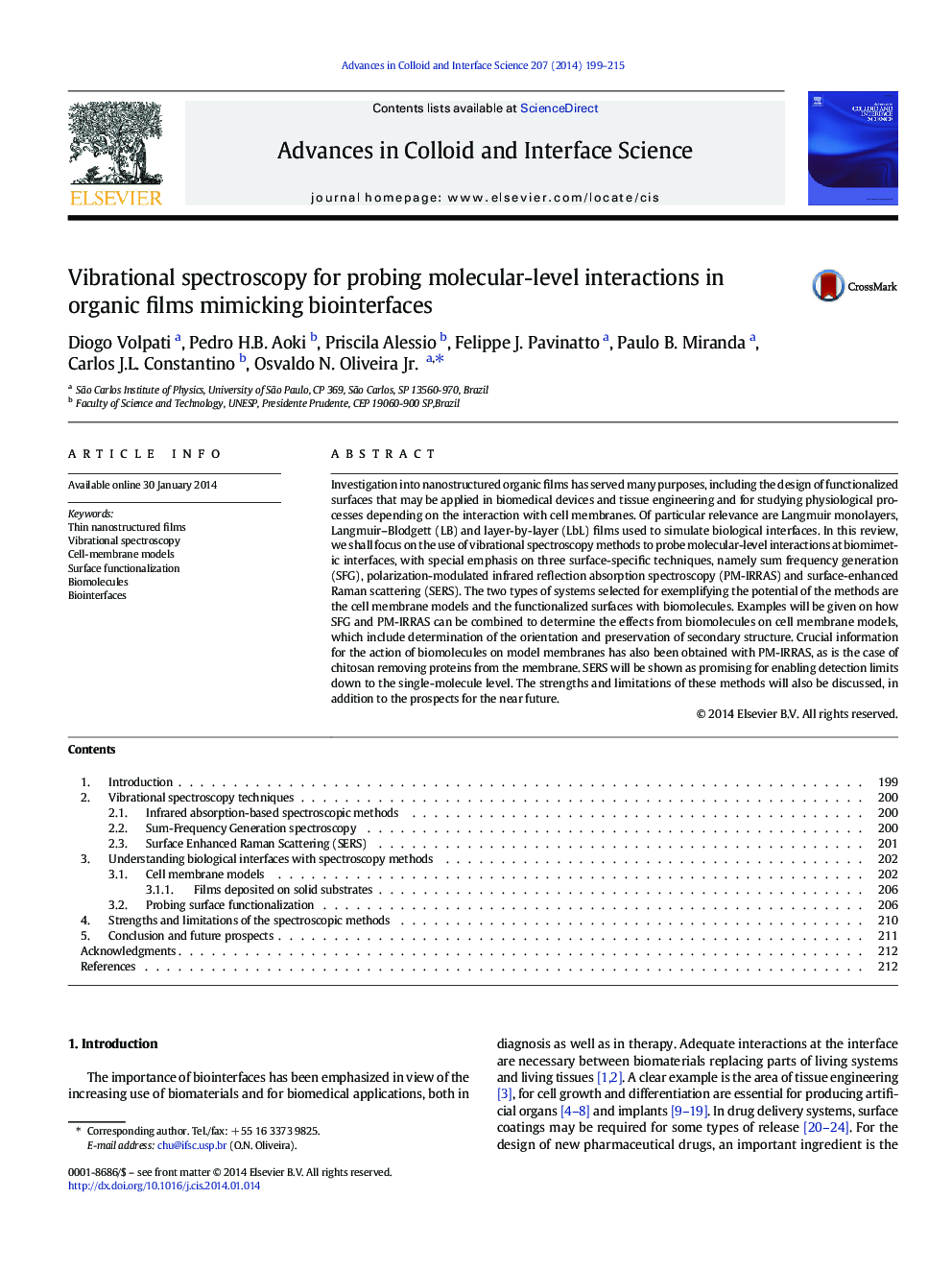| کد مقاله | کد نشریه | سال انتشار | مقاله انگلیسی | نسخه تمام متن |
|---|---|---|---|---|
| 590803 | 1453556 | 2014 | 17 صفحه PDF | دانلود رایگان |
• Vibrational spectroscopic methods used to probe biological interfaces are introduced.
• A critical assessment is provided for the use of these techniques.
• Strengths and limitations of the methods are discussed.
Investigation into nanostructured organic films has served many purposes, including the design of functionalized surfaces that may be applied in biomedical devices and tissue engineering and for studying physiological processes depending on the interaction with cell membranes. Of particular relevance are Langmuir monolayers, Langmuir–Blodgett (LB) and layer-by-layer (LbL) films used to simulate biological interfaces. In this review, we shall focus on the use of vibrational spectroscopy methods to probe molecular-level interactions at biomimetic interfaces, with special emphasis on three surface-specific techniques, namely sum frequency generation (SFG), polarization-modulated infrared reflection absorption spectroscopy (PM-IRRAS) and surface-enhanced Raman scattering (SERS). The two types of systems selected for exemplifying the potential of the methods are the cell membrane models and the functionalized surfaces with biomolecules. Examples will be given on how SFG and PM-IRRAS can be combined to determine the effects from biomolecules on cell membrane models, which include determination of the orientation and preservation of secondary structure. Crucial information for the action of biomolecules on model membranes has also been obtained with PM-IRRAS, as is the case of chitosan removing proteins from the membrane. SERS will be shown as promising for enabling detection limits down to the single-molecule level. The strengths and limitations of these methods will also be discussed, in addition to the prospects for the near future.
The use of vibrational spectroscopy techniques, including sum-frequency generation (SFG), polarization-modulated infrared reflection-absorption (PM-IRRAS) and Surface Enhanced Raman Scattering (SERS), is reviewed for the study of biointerfaces.Figure optionsDownload as PowerPoint slide
Journal: Advances in Colloid and Interface Science - Volume 207, May 2014, Pages 199–215
